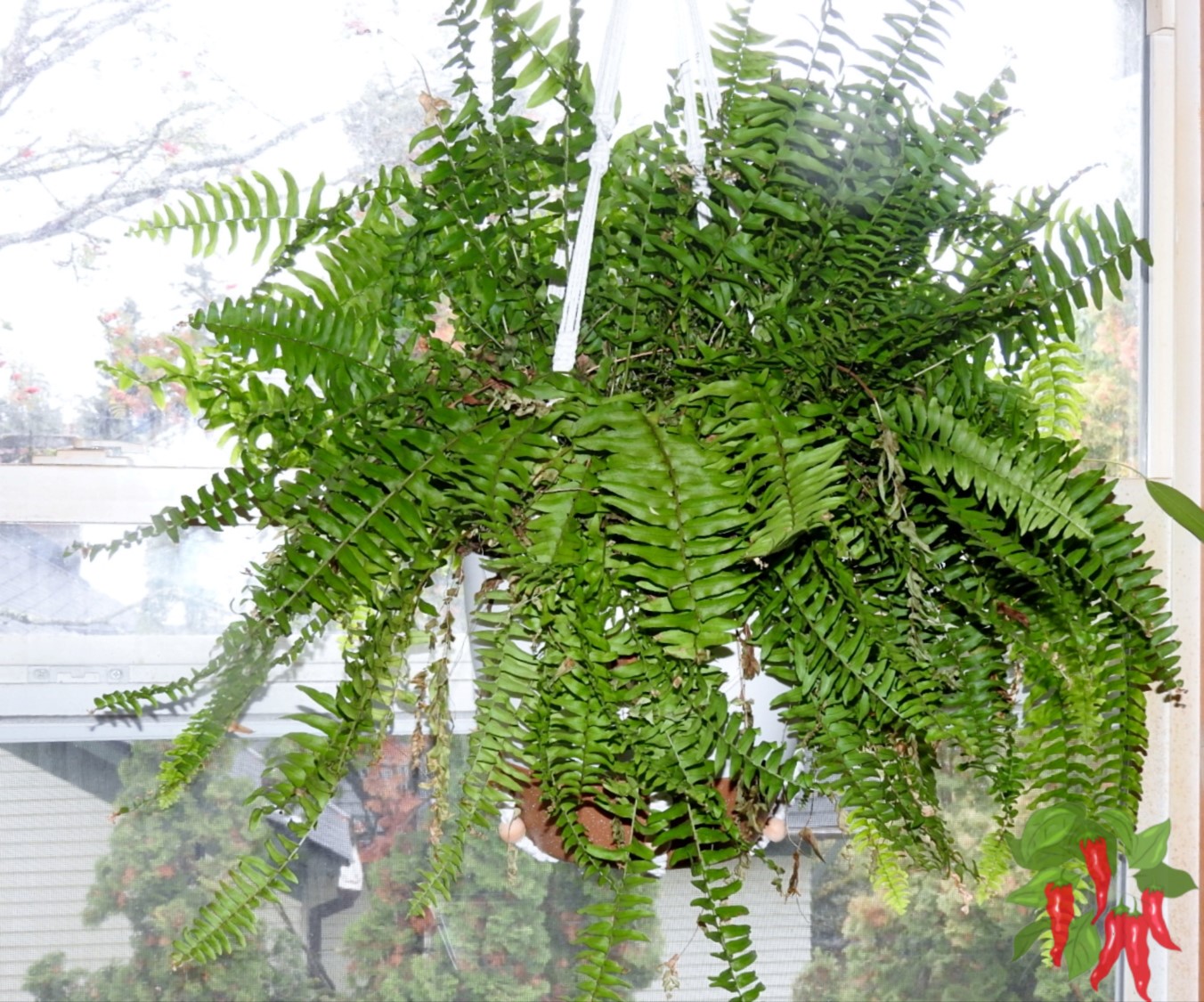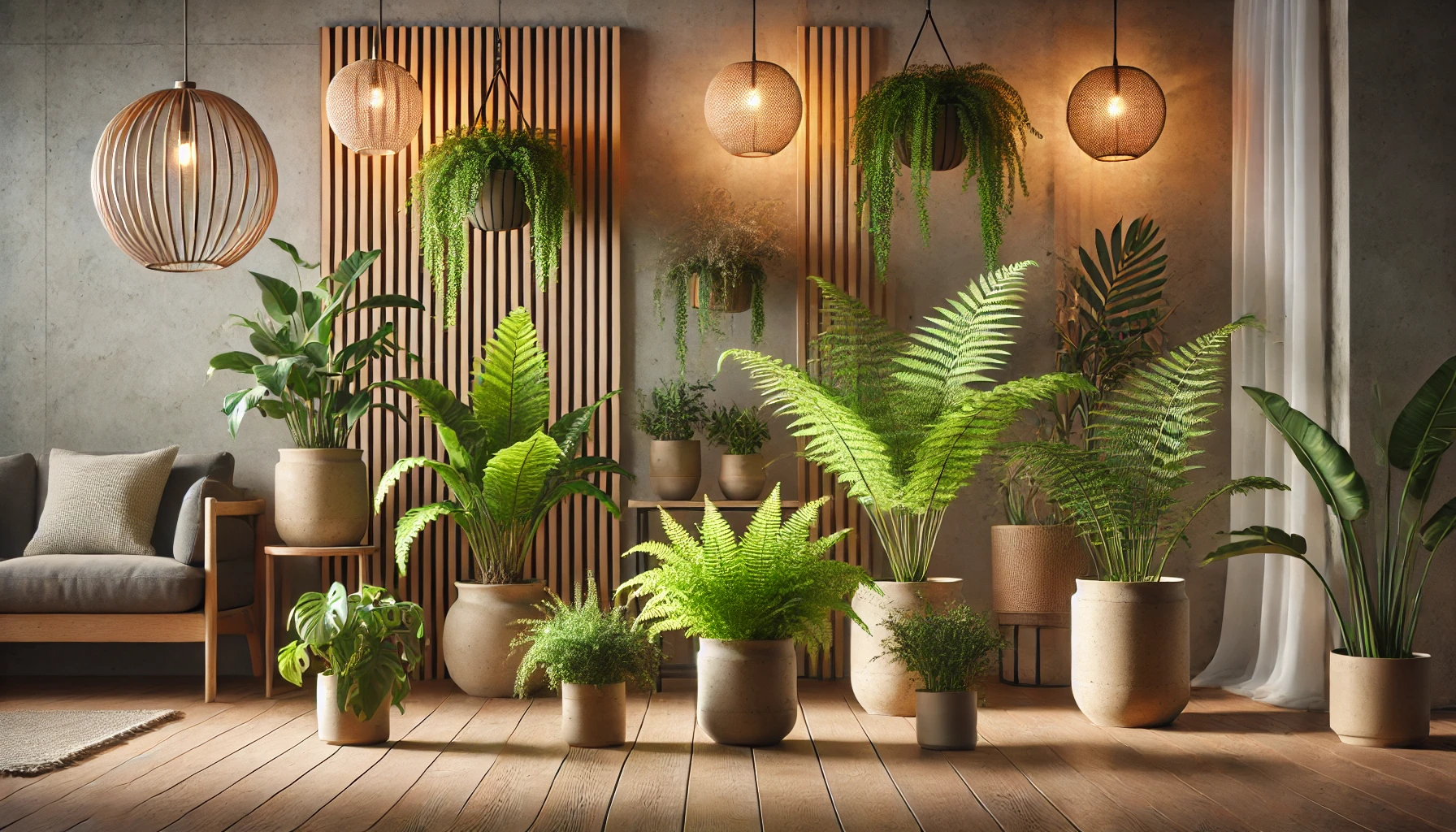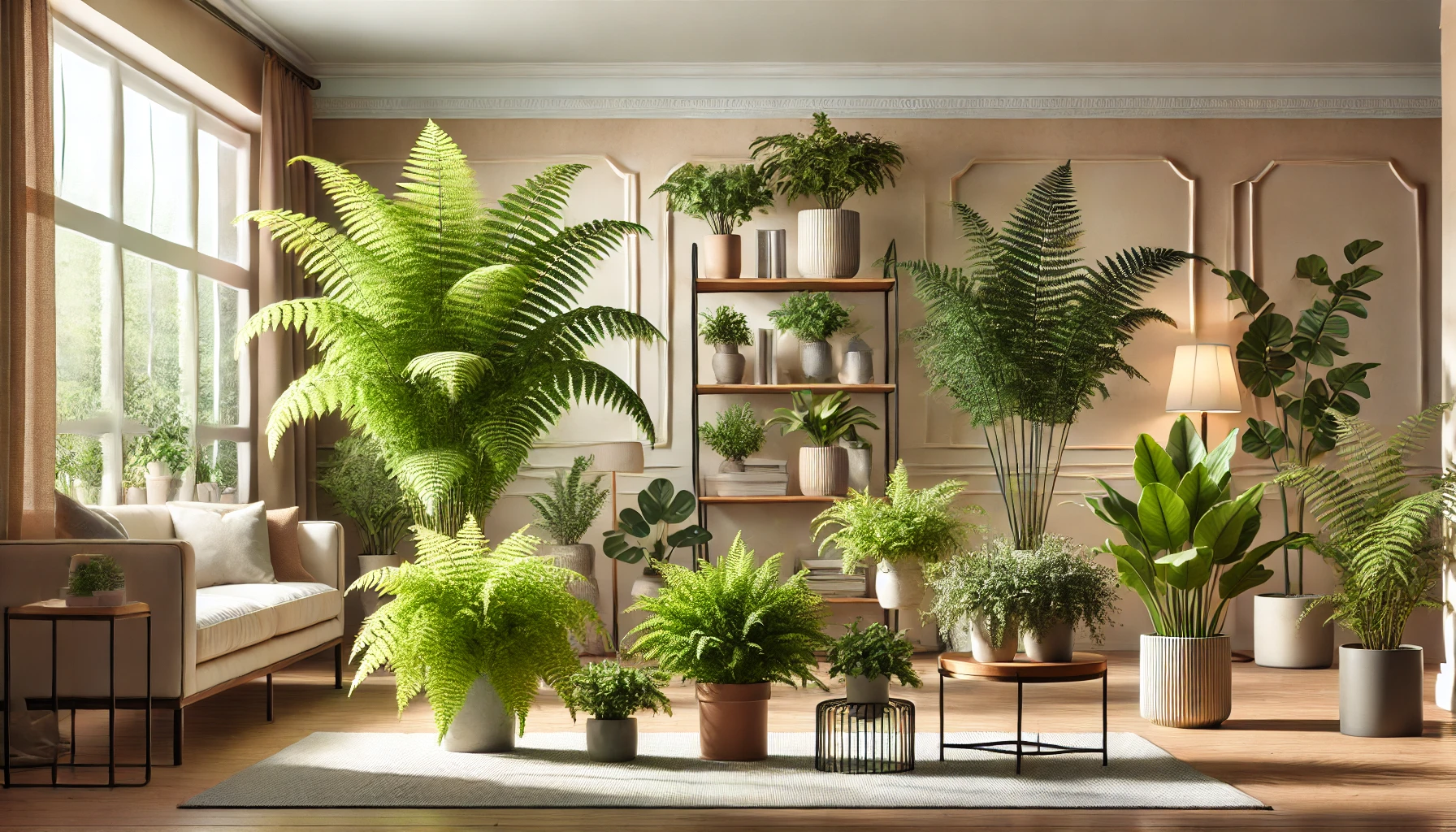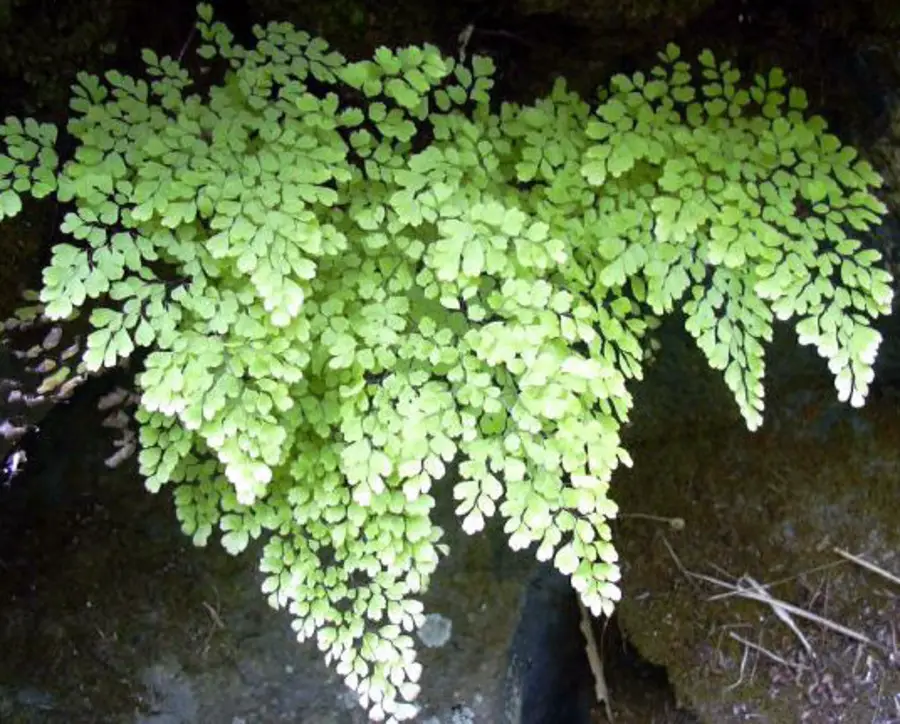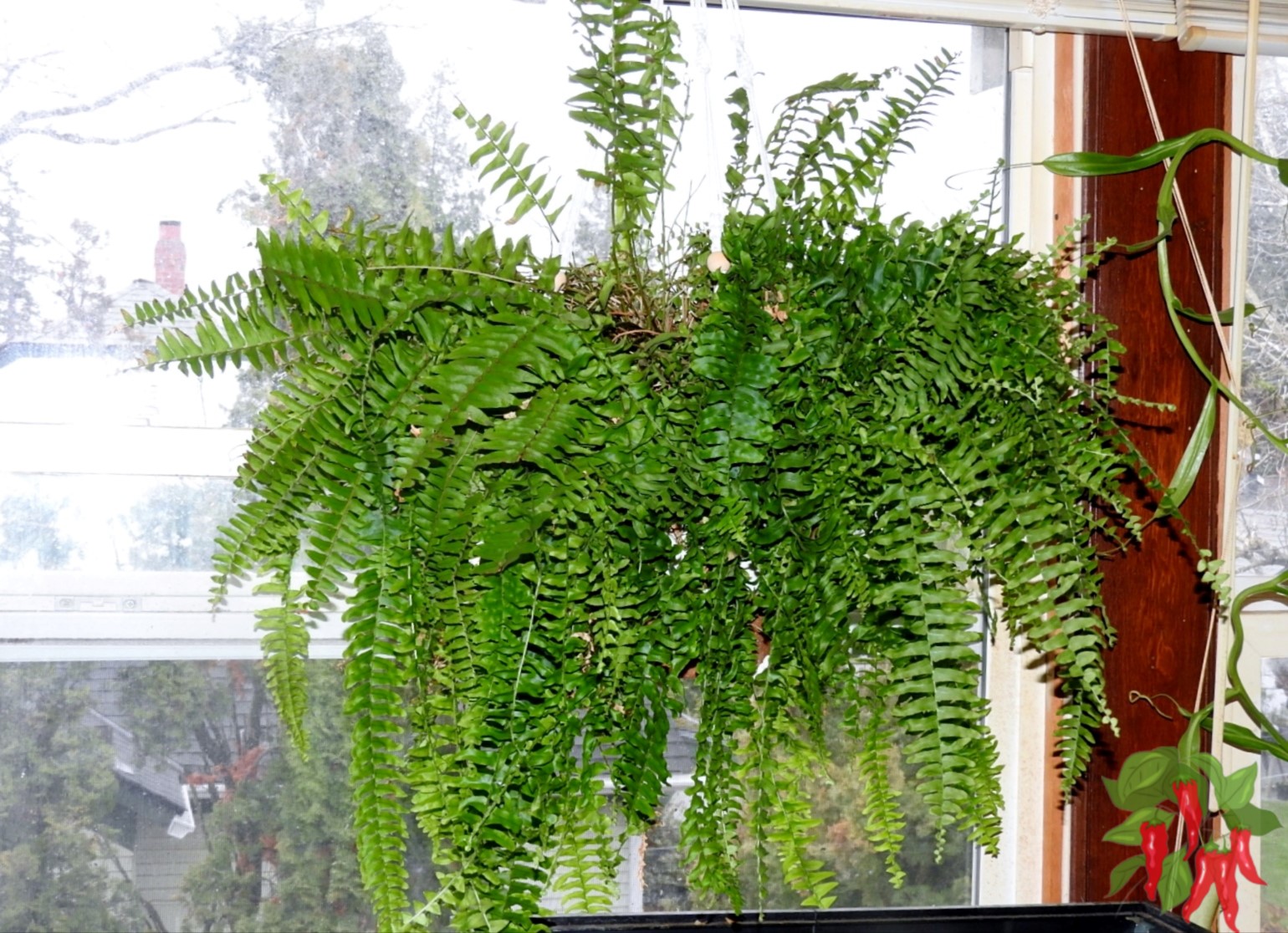This post contains affiliate links. If you buy something from one of our links we may earn a commission. Thanks
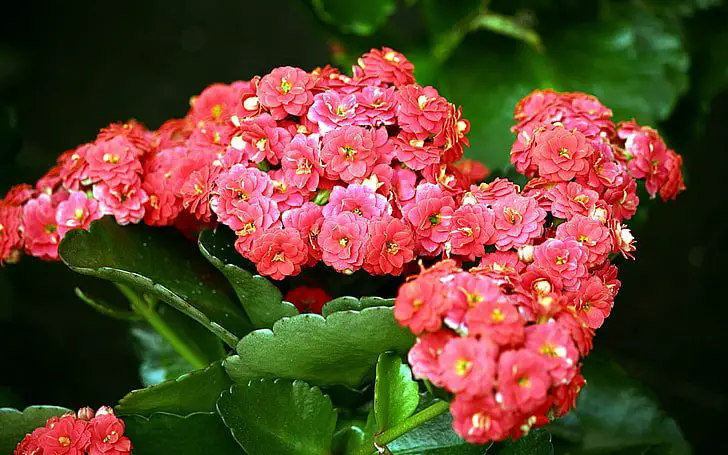
Learn the essentials of Kalanchoe Care Indoors! Discover tips for watering, lighting, and reblooming this stunning succulent with ease.
Kalanchoe Care Indoors doesn’t have to feel complicated and it’s surprisingly easy to master with a little guidance.
If you’ve struggled with keeping houseplants happy in the past, Kalanchoe is a forgiving option that thrives on simplicity.
This guide will help you keep your Kalanchoe looking its best, from vibrant blooms to healthy, lush foliage.
Indoor Kalanchoe Care Key Takeaways
- Indoor Kalanchoe Care requires bright indirect light.
- Use well-draining soil, and infrequent watering once the soil dries out.
- Fertilize monthly during spring and summer.
- Trim spent blooms to encourage reblooming.
- With proper care Kalanchoe thrives as a low-maintenance addition to any indoor space.
Comprehensive Guide to Indoor Kalanchoe Care
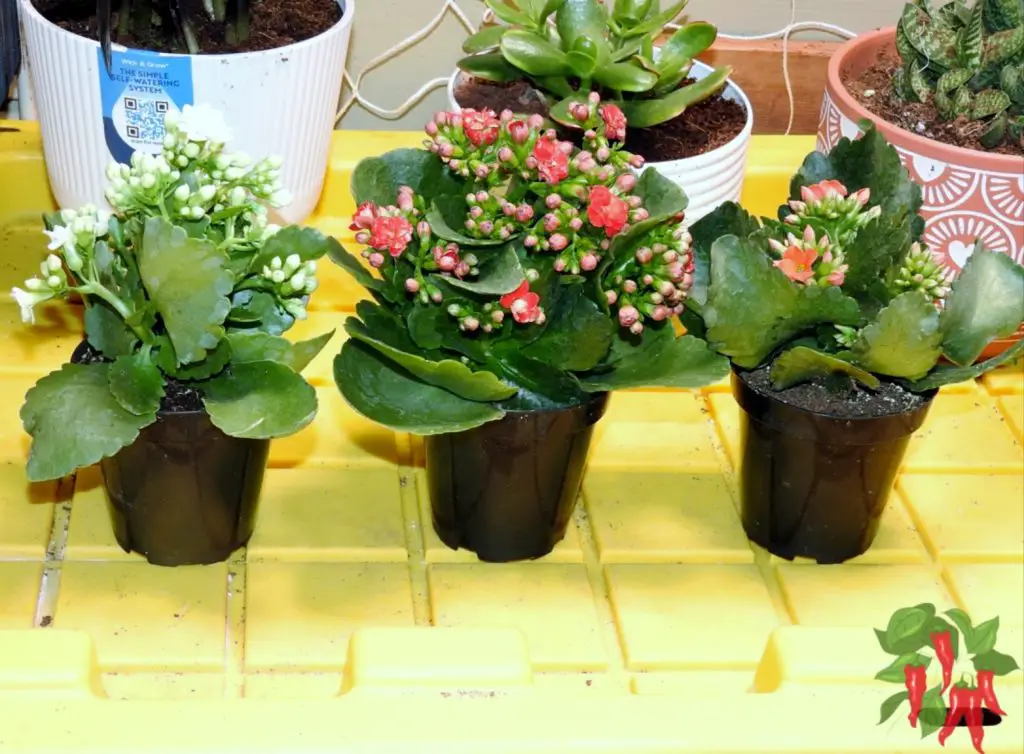
Kalanchoe is a favorite among indoor gardeners, and it’s easy to see why. Known for its vibrant, long-lasting blooms and low-maintenance nature, this succulent adds a cheerful touch to any space.
Whether you’re a seasoned plant enthusiast or just starting your indoor plant journey, Kalanchoe is a perfect choice for both beauty and ease of care.
This chart offers a quick reference for keeping your Kalanchoe thriving indoors with ease!
Plant Care Reference Guide for Kalanchoe
| Characteristic | Details |
|---|---|
| Common Name | Kalanchoe |
| Botanical Name | Kalanchoe spp. |
| Native Habitat | Madagascar and tropical regions of Africa and Asia |
| Plant Type | Succulent |
| Growth Pattern | Compact, bushy growth; upright flowering stems |
| Mature Size | 6–18 inches tall, 6–12 inches wide |
| Watering | Water sparingly; allow soil to dry out completely between waterings |
| Light/Sun Exposure | Bright, indirect light; tolerates some direct sunlight |
| Soil Type | Well-draining soil; mix of coco coir and perlite or cactus mix |
| Soil pH | Neutral to slightly acidic (6.0–7.0) |
| Temperature | 60–85°F (15–29°C); avoid frost |
| Humidity | Prefers dry to moderate humidity; avoid overly humid environments |
| Bloom Time & Flower Color | Late winter to spring; blooms in red, pink, yellow, orange, or white |
| Potential Problems | Root rot, pests (aphids, mealybugs), leggy growth, leaf discoloration |
| Repotting | Every 2–3 years or when root-bound |
| Hardiness Zones (USDA) | Zones 9–11 |
 Kalanchoe Live Succulents Plants Live Flowers (3 Pack), Kalanchoe Plant Live Succulent Plants, Kalanchoe Plants Live Indoor Plants Live Houseplants, Fresh Flowers for Delivery Prime by Plants for Pets
Kalanchoe Live Succulents Plants Live Flowers (3 Pack), Kalanchoe Plant Live Succulent Plants, Kalanchoe Plants Live Indoor Plants Live Houseplants, Fresh Flowers for Delivery Prime by Plants for Pets
Flaming Katy (Kalanchoe blossfeldiana)
Flaming Katy, one of the most popular varieties of Kalanchoe, is loved for its vibrant, long-lasting blooms and compact size. This cheerful succulent is a perfect addition to indoor spaces, bringing a splash of color and charm with minimal effort.
Features and Appeal
- Bright Blooms: Flaming Katy is famous for its clusters of small, brightly colored flowers in shades of red, pink, yellow, orange, and white. These blooms can last for weeks, brightening any room.
- Compact Growth: Its manageable size, typically growing 6–12 inches tall, makes it ideal for desks, windowsills, or shelves.
- Lush Foliage: The thick, green, scalloped leaves are as attractive as the flowers, adding texture and depth to its appearance.
Care Tips for Flaming Katy
- Light Requirements:
Place Flaming Katy in bright, indirect sunlight for the best bloom production. A sunny windowsill is ideal. Avoid prolonged exposure to harsh, direct sunlight to prevent leaf scorch. - Watering:
Water sparingly, allowing the soil to dry out completely between waterings. Overwatering can lead to root rot. - Soil and Potting:
Use well-draining soil, such as a cactus mix or coco coir and perlite. Always choose a pot with drainage holes to prevent water from sitting at the roots. - Temperature and Humidity:
Flaming Katy thrives in temperatures between 60–85°F and prefers dry to moderate humidity. Protect it from cold drafts or frost. - Fertilization:
Feed monthly during spring and summer with a diluted liquid fertilizer to support blooming. Skip fertilizing during fall and winter.
Encouraging Reblooming
Flaming Katy can bloom multiple times a year with the right care. After the flowers fade, trim back the spent blooms and reduce watering slightly.
To trigger a new bloom cycle, provide 12–14 hours of complete darkness each night for about 6 weeks while maintaining bright light during the day.
Why Choose Flaming Katy?
Flaming Katy isn’t just easy to care for—it’s a mood booster. Its colorful flowers and low-maintenance nature make it perfect for beginners or anyone looking for a plant that adds joy without demanding much attention.
Whether you place it on a sunny kitchen counter or gift it to a friend, Flaming Katy is sure to make an impression.
Why Kalanchoe is a Popular Indoor Succulent
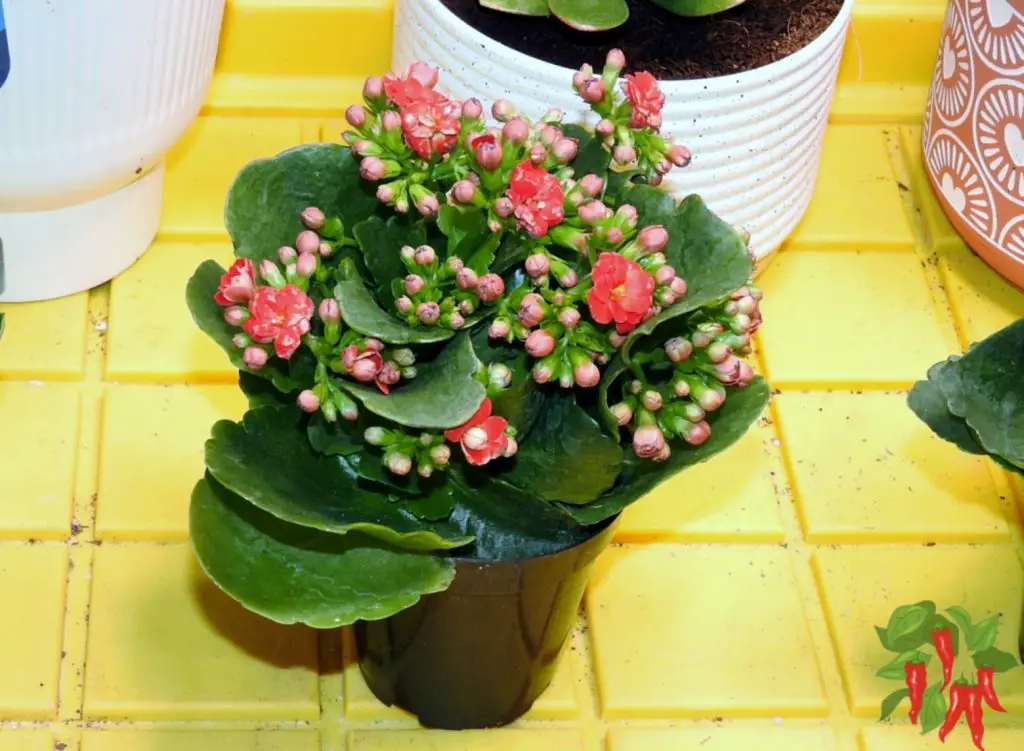
Kalanchoe has earned its spot as one of the most popular indoor succulents, and for good reason.
Its thick, fleshy leaves are beautiful and also serve a practical purpose, helping the plant retain water and thrive in indoor environments.
This hardy plant has adapted to dry conditions, making it a perfect match for busy plant owners or those new to gardening.
Its manageable size makes it ideal for small spaces, from apartments to office desks.
Benefits of Growing Kalanchoe Indoors
Kalanchoe isn’t just a pretty face. It’s a plant that offers practical benefits alongside its natural charm.
From brightening up your space to requiring minimal care, this succulent is a win for anyone looking to add greenery to their home.
A Burst of Vibrant Blooms
One of Kalanchoe’s standout features is its stunning blooms. These bright, cheerful flowers come in an variety of colors, including red, pink, yellow, orange, and white.
What makes Kalanchoe even more special is its ability to bloom for weeks, sometimes even months, under the right conditions.
Unlike many flowering plants, Kalanchoe doesn’t demand constant attention to keep its flowers looking fresh.
A little sunlight and the occasional watering are often all it needs to stay vibrant.
Low-Maintenance Charm
If you’ve ever struggled to keep houseplants alive, Kalanchoe is here to restore your confidence.
This succulent is incredibly forgiving and thrives on neglect more than overcare.
It doesn’t need frequent watering, can adapt to various light conditions, and rarely succumbs to pests or diseases when properly cared for.
Kalanchoe’s resilience makes it a favorite for those who want a low-fuss plant that still makes a bold statement.
Why Kalanchoe Deserves a Spot in Your Home
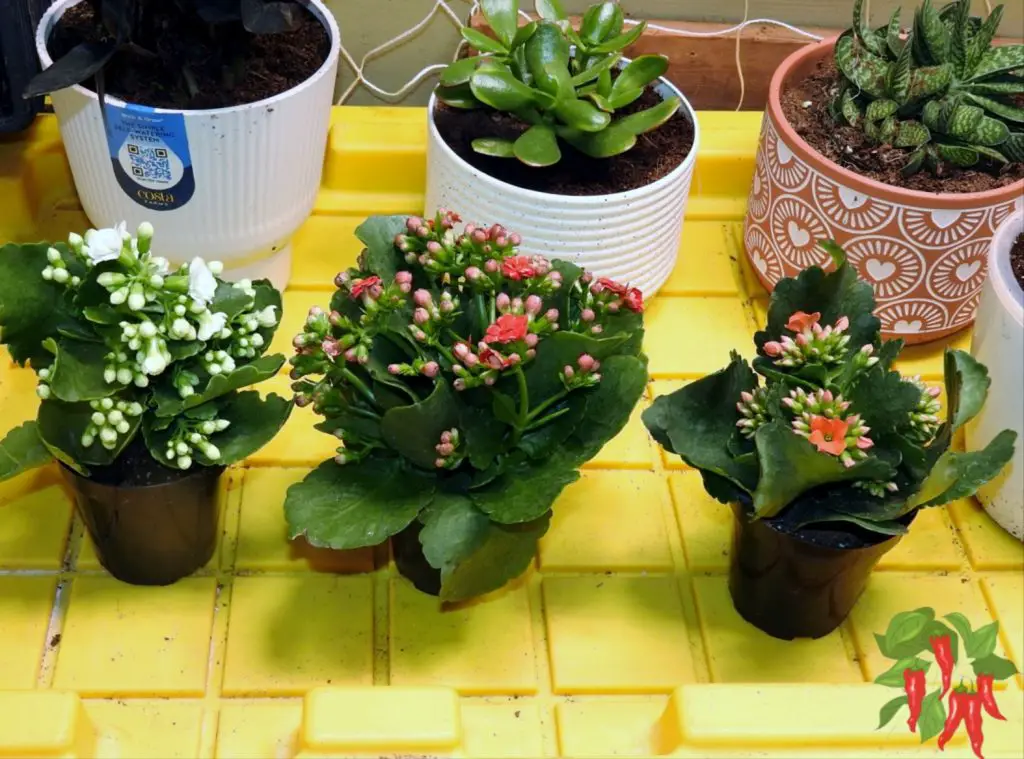
With its combination of vibrant flowers and minimal care requirements, Kalanchoe brings the best of both worlds.
Whether you’re looking to brighten up your living space or add a splash of color to your office, this plant is a versatile and rewarding choice.
Its ability to thrive in different conditions and its long-lasting blooms make it a must-have for anyone looking to enjoy the beauty of nature indoors.
Understanding Kalanchoe
Kalanchoe is more than just a pretty plant—it’s a fascinating succulent with a rich history and variety.
Let’s take a closer look at where it comes from and the many types you can choose from to enhance your indoor space.
Origin and Natural Habitat
Kalanchoe hails from the warm, arid regions of Madagascar, though its natural range extends to parts of Africa and Asia.
In its native habitat, this plant thrives in rocky, well-draining soils and relies on its thick, fleshy leaves to store water during dry spells.
These natural adaptations make it a resilient choice for indoor gardening, where similar conditions can be easily mimicked.
Kalanchoe is a perfect example of nature’s ability to create beauty and efficiency in challenging environments.
Common Varieties
Kalanchoe offers a wide range of species and cultivars, each with unique traits. Here are some of the most popular varieties for indoor cultivation:
- Kalanchoe Blossfeldiana: Known as the “Flaming Katy,” this is the most commonly grown variety, celebrated for its colorful blooms that last for weeks.
 Kalanchoe Plant Succulents Plants Live Houseplants in White Planter, Live Succulents Live House Plants, Succulent Plants Live Plants Indoor Plants, Live Succulent Plant Lover Gifts by Plants for Pets
Kalanchoe Plant Succulents Plants Live Houseplants in White Planter, Live Succulents Live House Plants, Succulent Plants Live Plants Indoor Plants, Live Succulent Plant Lover Gifts by Plants for Pets
- Kalanchoe Tomentosa (Panda Plant): A fuzzy-leafed variety with silvery green foliage edged in brown, adding a touch of texture to your collection.

Panda Plant Kalanchoe 2 inch – Healthy Succulent Kalanchoe Live Easy Care Indoor House Plant, Fully Rooted in 2/4/6 inch Sizes – Low Light Succulents 2 inch
- Kalanchoe Daigremontiana (Mother of Thousands): Famous for its ability to produce baby plantlets along the edges of its leaves.

3 Mother of thousands Kalanchoe daigremontiana~mexican hat plant succulent
- Kalanchoe Luciae (Paddle Plant): With its large, paddle-shaped leaves that develop red edges under bright light, it’s a striking addition to any indoor setup.

Altman Plants, Flapjack Kalanchoe Plant Real Succulents Live Indoor Plants, Kalanchoe Plants Live Succulents Plants Live House Plants Live, Succulent Plants Live Plants Indoor Plants Live Houseplants
- Kalanchoe Thyrsiflora (Flapjacks): Often confused with Paddle Plant, it features similar leaves but with subtle differences in bloom structure.

Generic Kalanchoe thyrsiflora ‘flap jack’, Green and red
With so many options to choose from, Kalanchoe caters to a variety of tastes, whether you’re drawn to vibrant flowers, unique foliage, or both.
Each variety offers a little something special, making it easy to find the perfect match for your indoor garden.
Ideal Indoor Growing Conditions for Kalanchoe
Creating the right environment for your Kalanchoe is key to keeping it happy and healthy. With its natural resilience and adaptability, setting up the perfect conditions indoors is simpler than you might think.
Light Requirements
Kalanchoe thrives in bright, indirect light but can handle some direct sunlight, especially in the morning.
A sunny windowsill facing east or west is an ideal spot. If you notice the plant’s leaves stretching or its vibrant colors fading, it may be a sign it’s not getting enough light.
On the flip side, too much harsh, direct sunlight can scorch the leaves, so aim for a balance.
Pro Tip: If your home has limited natural light, an LED grow light can supplement and help maintain healthy growth and blooming.
Temperature and Humidity
Kalanchoe prefers temperatures between 60-85°F (15-29°C), making it well-suited to most indoor environments.
While it can tolerate brief dips in temperature, avoid exposing it to cold drafts or placing it near heating vents, which can dry it out.
Humidity isn’t a major concern for Kalanchoe. It thrives in typical indoor humidity levels but appreciates a slightly drier environment, similar to its native arid habitat. Avoid overwatering in humid conditions to prevent root rot.
Soil and Pot Selection
Soil Needs
Kalanchoe requires well-draining soil to prevent waterlogged roots. A mix of coco coir and perlite is an excellent choice.
Coco coir retains just enough moisture without becoming soggy, while perlite improves drainage and aeration, keeping the roots healthy.
Pot Selection
Choose a pot with drainage holes to allow excess water to escape. While terracotta pots are a great option for their breathability, any container with proper drainage will work.
Avoid using oversized pots, as these can hold too much soil and retain excess water, which can lead to root issues.
Why These Conditions Matter
By providing the right light, temperature, and soil, you’ll create an environment that mimics Kalanchoe’s natural habitat.
These conditions ensure healthy growth but also more vibrant blooms and a longer lifespan for your plant.
Kalanchoe’s easy-going nature means even small adjustments can make a big difference in keeping it thriving indoors.
Watering Practices for Kalanchoe
Watering your Kalanchoe the right way is essential to keeping it healthy and blooming.
This plant thrives on a “less is more” approach, so understanding its needs can save you from common mistakes like overwatering.
Frequency and Method
Kalanchoe prefers a thorough but infrequent watering schedule. The key is to let the soil dry out completely between waterings. Here’s how to get it right:
- Check the Soil: Stick your finger about an inch into the soil. If it feels dry, it’s time to water.
- Water Deeply: Water until you see it draining out of the bottom of the pot. This ensures the roots get enough moisture.
- Avoid Standing Water: Empty the saucer or drip tray to prevent root rot.
For most indoor environments, watering every 2–3 weeks is sufficient, but always adjust based on your plant’s environment and soil conditions.
Seasonal Adjustments
- Spring and Summer (Active Growth): During the warmer months, Kalanchoe grows more actively and may need water more often, typically every 1–2 weeks.
- Fall and Winter (Dormant Phase): As the plant slows down its growth, reduce watering to once every 3–4 weeks. Overwatering during this time can lead to root rot.
Tip: Pay attention to humidity and light levels in your home. Lower light or higher humidity may mean you need to water less often.
Why Watering Matters
Kalanchoe stores water in its thick leaves, making it drought-tolerant and forgiving of occasional neglect.
However, overwatering is its biggest enemy, often leading to yellowing leaves, soft stems, or even root rot.
With a little attention to your watering routine, you’ll keep your Kalanchoe thriving and ready to show off its gorgeous blooms.
Fertilization for Kalanchoe
Feeding your Kalanchoe helps it grow strong, stay vibrant, and produce those stunning blooms it’s known for.
While this plant doesn’t need heavy feeding, giving it the right nutrients at the right time ensures it stays healthy without any hiccups.
Nutrient Needs
Kalanchoe benefits from a balanced, water-soluble fertilizer with an equal ratio like 10-10-10 or one slightly higher in phosphorus (e.g., 10-15-10) to support flowering.
Here’s how to fertilize effectively:
- During Active Growth: Feed your Kalanchoe once a month during spring and summer when it’s actively growing and blooming.
- Dilute the Fertilizer: Always mix fertilizer at half the recommended strength to avoid overwhelming the plant.
- Skip the Dormant Phase: Stop fertilizing during fall and winter when the plant slows its growth.
Avoiding Over-Fertilization
Too much fertilizer can harm your Kalanchoe, leading to weak, leggy growth or burned roots. Look out for these signs:
- Symptoms of Over-Fertilization:
- Yellowing leaves or leaf tips turning brown.
- A buildup of white crust on the soil surface (salt deposits).
- Stunted growth despite proper care.
- How to Prevent Over-Fertilization:
- Fertilize sparingly and stick to a monthly schedule during active growth.
- Flush the soil with water occasionally to remove excess salts if you notice buildup.
Why Fertilization Matters
Kalanchoe doesn’t demand a lot of nutrients, but the occasional feeding keeps its blooms vibrant and its foliage lush.
By fertilizing thoughtfully and avoiding overuse, you’ll give your plant everything it needs to thrive without risking damage.
Think of it as giving your Kalanchoe a little extra energy boost when it needs it most!
Maintenance and Pruning for Kalanchoe
Keeping your Kalanchoe in top shape doesn’t require much effort, but a little regular care goes a long way.
From removing spent flowers to dusting the leaves, these simple tasks help your plant stay healthy and encourage fresh growth and blooms.
Deadheading
Once your Kalanchoe’s vibrant flowers start to fade, it’s time to deadhead. Removing spent blooms directs the plant’s energy toward producing new flowers rather than maintaining old ones.
How to Deadhead:
- Use clean, sharp scissors or pruners.
- Snip the flower stalks near the base of the stem, avoiding the main foliage.
- Discard the spent flowers to prevent pests or diseases.
Regular deadheading not only keeps the plant looking tidy but also increases the chances of a second bloom cycle.
Leaf Care
Healthy leaves are crucial for your Kalanchoe’s growth. Damaged or dead leaves can drain energy from the plant, so it’s important to remove them.
How to Trim Leaves:
- Gently pull off dry or yellowed leaves by hand, or use sterilized scissors for tougher spots.
- Avoid over-trimming; focus only on the unhealthy parts.
Removing these leaves encourages healthy new growth and keeps your plant looking fresh.
Cleaning the Leaves
Dust can accumulate on Kalanchoe’s fleshy leaves, blocking sunlight and hindering photosynthesis. Regular cleaning helps the plant absorb light and stay vibrant.
How to Clean the Leaves:
- Use a soft, damp cloth to gently wipe each leaf.
- Avoid spraying water directly onto the leaves, as excess moisture can lead to rot.
- For hard-to-reach spots, use a soft-bristled brush or cotton swab.
Why Maintenance Matters
A little routine care makes a big difference in your Kalanchoe’s overall health and appearance.
By deadheading flowers, trimming leaves, and keeping the plant clean, you’ll create the ideal conditions for vibrant blooms and lush foliage all year round.
It’s simple, rewarding, and keeps your Kalanchoe looking its absolute best!
Repotting Kalanchoe
Repotting your Kalanchoe doesn’t just give it a fresh start. It helps it grow healthier and more vibrant.
While this succulent doesn’t need frequent repotting, there are clear signs to look for when it’s time to give it a new home.
When to Repot
Kalanchoe should be repotted every 2-3 years, or sooner if you notice:
- Root-Bound Growth: Roots growing out of the drainage holes or circling the bottom of the pot.
- Compacted Soil: The soil no longer drains well or feels hard and clumpy.
- Lack of Growth: The plant seems stunted despite proper care.
Spring, during the plant’s active growing season, is the best time for repotting. This gives your Kalanchoe time to adjust to its new environment and thrive.
Steps for Repotting
- Choose the Right Pot:
Select a pot that’s 1-2 inches larger in diameter than the current one. Ensure it has drainage holes to prevent waterlogging. - Prepare Fresh Soil:
Use a well-draining mix, such as a combination of coco coir and perlite. This mimics the plant’s natural habitat and helps avoid root rot. - Remove the Plant:
Gently loosen the soil around the plant and carefully lift it from the pot. If roots are tangled, untangle them lightly or trim any damaged sections with sterilized scissors. - Replant:
Place the Kalanchoe in the new pot, positioning it so the base of the plant sits just above the soil line. Fill in around the roots with fresh soil, pressing gently to secure the plant. - Water Sparingly:
After repotting, give the soil a light watering to help it settle. Avoid overwatering during the first week to let the plant acclimate.
Why Repotting Matters
Repotting gives your Kalanchoe room to grow, ensures its roots stay healthy, and refreshes the soil with nutrients.
By following these steps, you’ll keep your plant thriving and ready to show off its colorful blooms. A little extra care every few years makes all the difference!
Propagation Techniques for Kalanchoe
Growing new Kalanchoe plants is as rewarding as it is simple. Whether you’re working with stem cuttings, leaf cuttings, or offsets, this succulent’s ability to multiply makes it a favorite for plant lovers.
Let’s dive into the most effective methods to propagate your Kalanchoe.
Stem Cuttings
Propagating Kalanchoe through stem cuttings is one of the easiest and quickest methods.
How to Propagate with Stem Cuttings:
- Choose a Healthy Stem: Select a stem with no flowers and at least a few sets of leaves.
- Cut the Stem: Use sterilized scissors to snip a section about 4–6 inches long.
- Allow to Callus: Let the cutting dry and callus over for 1–2 days to prevent rot.
- Plant in Soil: Place the cutting into a small pot with well-draining soil, such as a mix of coco coir and perlite.
- Water Sparingly: Water lightly and keep the soil slightly moist until roots form, usually within a few weeks.
Leaf Cuttings
If you have fallen or trimmed leaves, don’t throw them away—they can grow into new plants with a bit of patience.
Step-by-Step Guide for Leaf Cuttings:
- Pick the Right Leaf: Choose a healthy, intact leaf. Avoid damaged or shriveled leaves.
- Detach Carefully: Gently twist or cut the leaf away from the main plant, ensuring the base stays intact.
- Let it Callus: Place the leaf in a dry, shaded area for 1–2 days to allow the wound to callus over.
- Lay on Soil: Lay the leaf flat on top of well-draining soil, pressing it lightly to ensure contact.
- Mist Regularly: Mist the soil lightly every few days to keep it just moist. Roots and baby plants should appear in 2–3 weeks.
Offsets
Kalanchoe naturally produces small offsets, or “pups,” around the base of the parent plant. These are ready-made plants that can be easily separated and grown on their own.
How to Propagate Using Offsets:
- Identify Offsets: Look for small plantlets growing at the base of the main plant.
- Remove Gently: Use clean hands or a knife to carefully detach the offsets from the parent plant, ensuring they have roots attached.
- Replant: Plant the offsets in their own pots with fresh, well-draining soil.
- Water Lightly: Water sparingly to help the new plant settle into its pot.
Why Propagation is Worth It
Propagating Kalanchoe not only expands your plant collection but also allows you to share its beauty with friends and family.
Whether you’re growing from a stem cutting, leaf cutting, or offset, each method is simple, fun, and rewarding. Plus, who doesn’t love having extra plants around?
Common Problems and Solutions for Kalanchoe
Even though Kalanchoe is a hardy and low-maintenance plant, it can sometimes face challenges. From pesky pests to growth issues, knowing how to spot and fix problems early will keep your plant thriving and looking its best.
Pests
Kalanchoe can occasionally attract pests like aphids, mealybugs, and spider mites. These tiny invaders can weaken the plant by feeding on its sap, leaving behind sticky residue or causing deformed leaves.
Signs of Infestation:
- Sticky, shiny residue on leaves (honeydew).
- White, cottony patches (mealybugs).
- Tiny webbing (spider mites).
How to Manage Pests:
- Manual Removal: Wipe leaves with a damp cloth or cotton swab dipped in rubbing alcohol.
- Natural Remedies: Spray with neem oil or a mix of water and mild dish soap.
- Prevention: Regularly inspect the plant and keep it in a well-ventilated area.
Diseases
The most common disease affecting Kalanchoe is root rot, caused by overwatering or poorly draining soil. Fungal infections can also appear if the plant is exposed to excessive moisture.
Signs of Disease:
- Yellowing, wilting leaves.
- Mushy, blackened roots.
- Foul odor from the soil.
How to Prevent and Treat Diseases:
- Prevent: Use well-draining soil and pots with drainage holes. Water sparingly and avoid leaving the plant in standing water.
- Treat Root Rot: Remove the plant, trim off infected roots, and repot in fresh soil. Reduce watering until it shows signs of recovery.
- Combat Fungus: Remove affected leaves and treat with a fungicide if needed.
Growth Issues
Kalanchoe may experience leggy growth, leaf discoloration, or stunted development if it’s not in the right environment.
Leggy Growth:
- Cause: Insufficient light.
- Fix: Move the plant to a brighter spot with indirect sunlight, and rotate it regularly to ensure even growth.
Leaf Discoloration:
- Cause: Overwatering or poor lighting.
- Fix: Allow the soil to dry between waterings and provide adequate light.
Stunted Growth:
- Cause: Nutrient deficiency or root-bound conditions.
- Fix: Fertilize during the growing season and repot if the roots are crowded.
Why Proactive Care Matters
Addressing problems early keeps your Kalanchoe looking vibrant and prevents long-term damage.
With just a little attention to its needs, this resilient plant will reward you with beautiful blooms and healthy foliage for years to come.
Whether it’s pests, diseases, or growth hiccups, a watchful eye and quick action can make all the difference!
Advanced Care Tips for Kalanchoe
Once you’ve mastered the basics, taking your Kalanchoe care to the next level can ensure vibrant blooms and a thriving plant all year round.
These advanced tips focus on encouraging reblooming, adapting to seasonal changes, and pairing Kalanchoe with other plants for a stunning display.
Encouraging Reblooming
Kalanchoe is a short-day plant, meaning its blooming cycle is triggered by extended periods of darkness. Here’s how to promote multiple blooming cycles:
- Control Light Exposure:
- Provide your plant with 12-14 hours of complete darkness each night for about 6 weeks. Use a box or place it in a dark room during the evening to simulate its natural blooming conditions.
- Cut Back Spent Flowers:
- After the flowers fade, trim the flower stalks to redirect the plant’s energy toward new blooms.
- Fertilize Regularly:
- During the growing season, use a balanced or slightly phosphorus-heavy fertilizer (e.g., 10-15-10) once a month to support blooming.
- Maintain Consistent Care:
- Ensure the plant has bright, indirect light during the day and minimal disturbances to its dark periods.
With patience and proper care, your Kalanchoe can bloom multiple times a year.
Seasonal Care Adjustments
Kalanchoe’s needs change with the seasons, and adjusting your care routine can help it thrive year-round.
- Spring and Summer:
- Increase watering slightly as the plant enters its active growth phase.
- Fertilize monthly to support flowering and foliage development.
- Fall and Winter:
- Reduce watering as the plant’s growth slows. Water only when the soil is completely dry.
- Avoid fertilizing and prepare for its blooming cycle by introducing longer periods of darkness.
Adapting to these seasonal changes ensures your Kalanchoe stays healthy and ready to bloom again.
Companion Planting
Pairing Kalanchoe with other plants can enhance its beauty and create a thriving indoor garden.
- Ideal Companions:
- Aloe Vera or Snake Plant: Their similar light and watering needs make them perfect partners.
- Pothos or Philodendron: These trailing plants complement Kalanchoe’s upright growth and colorful blooms.
- Jade Plant: Adds a sculptural element while sharing the same care requirements.
- Aesthetic Benefits:
- Combine Kalanchoe with green-foliage plants to make its vibrant flowers stand out.
- Use decorative pots and group plants with varying heights and textures for a dynamic look.
Why Advanced Care Matters
Taking these extra steps not only keeps your Kalanchoe healthy but also elevates its natural beauty.
By encouraging reblooming, adjusting care with the seasons, and thoughtfully pairing it with other plants, you can enjoy a thriving indoor garden that’s as functional as it is stunning.
Kalanchoe is a joy to care for, and these advanced tips help you make the most of this remarkable plant.
FAQs About Kalanchoe Care
Kalanchoe is a popular houseplant, but it’s natural to have a few questions about how to keep it thriving.
From watering routines to encouraging those beautiful blooms, we’ve got the answers to help you care for your plant with confidence.
Here are some of the most commonly asked questions about Kalanchoe care.
Does Kalanchoe flower all year round?
No, Kalanchoe doesn’t flower year-round, but its blooms can last for weeks or even months with proper care. Typically, Kalanchoe plants flower naturally in late winter to early spring. However, with the right conditions, including controlling light exposure, you can encourage them to rebloom multiple times a year.
Kalanchoe is a short-day plant, meaning it needs long periods of darkness (about 12-14 hours a night) for several weeks to trigger flowering. By mimicking these conditions indoors, you can enjoy its vibrant blooms beyond its natural flowering season. Once the flowers fade, it enters a resting phase before the next bloom cycle.
Can Kalanchoe thrive in low-light conditions?
While Kalanchoe can tolerate low-light conditions temporarily, it thrives best in bright, indirect sunlight. Prolonged low light may lead to leggy growth and fewer blooms. If natural light is limited, consider using a grow light to maintain its health and vibrant appearance.
How often should I water my Kalanchoe?
Water your Kalanchoe only when the soil has dried out completely, typically every 2–3 weeks. During its active growing season in spring and summer, you may need to water slightly more often, while in fall and winter, reduce watering to prevent root rot.
What are the signs of overwatering in Kalanchoe?
Overwatering can cause yellowing or wilting leaves, a mushy stem, and soggy soil. In severe cases, it may lead to root rot, indicated by a foul odor and blackened roots. If you notice these signs, allow the soil to dry out and consider repotting the plant in fresh, well-draining soil.
Is Kalanchoe safe for pets?
No, Kalanchoe is considered toxic to pets if ingested. It contains compounds that can cause vomiting, diarrhea, or more severe symptoms in cats and dogs. Keep your Kalanchoe out of reach of curious pets or consider pet-safe alternatives if this is a concern.
How can I encourage my Kalanchoe to bloom again?
To encourage reblooming, provide your Kalanchoe with 12-14 hours of complete darkness each night for about six weeks. Trim spent flowers, fertilize monthly during the growing season, and maintain consistent care, including bright, indirect light during the day. With patience, your Kalanchoe will reward you with another cycle of vibrant blooms.
Kalanchoe Care Indoors Conclusion
Kalanchoe is a standout plant that offers vibrant blooms, low-maintenance care, and plenty of personality for your indoor spaces.
From understanding its light and watering needs to mastering advanced tips like encouraging reblooming, this resilient succulent proves it’s a perfect choice for gardeners of all levels.
Why You Should Grow Kalanchoe
Whether you’re drawn to its cheerful flowers or its forgiving nature, Kalanchoe brings both beauty and ease to your home.
With just a little attention, this plant rewards you with lush foliage and colorful blooms that brighten any room. So why not add a Kalanchoe to your collection and enjoy the charm it brings all year round? Happy growing!
Kalanchoe Care Key Takeaways
- Kalanchoe thrives in bright, indirect light and well-draining soil, such as a coco coir and perlite mix.
- Water sparingly, allowing the soil to dry out completely between waterings.
- Fertilize monthly during the growing season to support vibrant blooms.
- Deadhead spent flowers and prune damaged leaves to maintain health and appearance.
- Adjust care routines seasonally, reducing watering in fall and winter.
- Promote reblooming with controlled light exposure and consistent care.
- Pair Kalanchoe with other succulents or foliage plants for a stunning indoor garden.
By following these tips, you’ll enjoy a thriving, colorful Kalanchoe that’s as rewarding to care for as it is to admire!
🌵 Indoor Succulent Guides
Discover how to grow, care for, and enjoy stunning indoor succulents! These guides cover everything from light needs to individual plant care.
- 🌱 Indoor Succulent Plant Care (Pillar Guide)
- 💡 Light Requirements for Indoor Succulents
- 🌙 Best Indoor Succulents for Low Light
- 🌵 Succulents and Cacti for Indoors
- 🌿 How to Grow Jade Plants
- 🪴 How to Grow Gasteria
- 🔥 Crassula Capitella ‘Campfire’ Plant
- 🌸 Sedum Burrito Care
- ✨ 17 Benefits of Growing Succulents Indoors
- 🍃 Crassula Capitella Varieties
- 🌼 Kalanchoe Care Indoors
- 🌴 Caring for Ponytail Palm
- 💎 String of Pearls Care
- See all articles in our Indoor Succulents category
Related Content
Visit my Amazon Influencer Page for videos and gardening products Grow Your Own Garden

